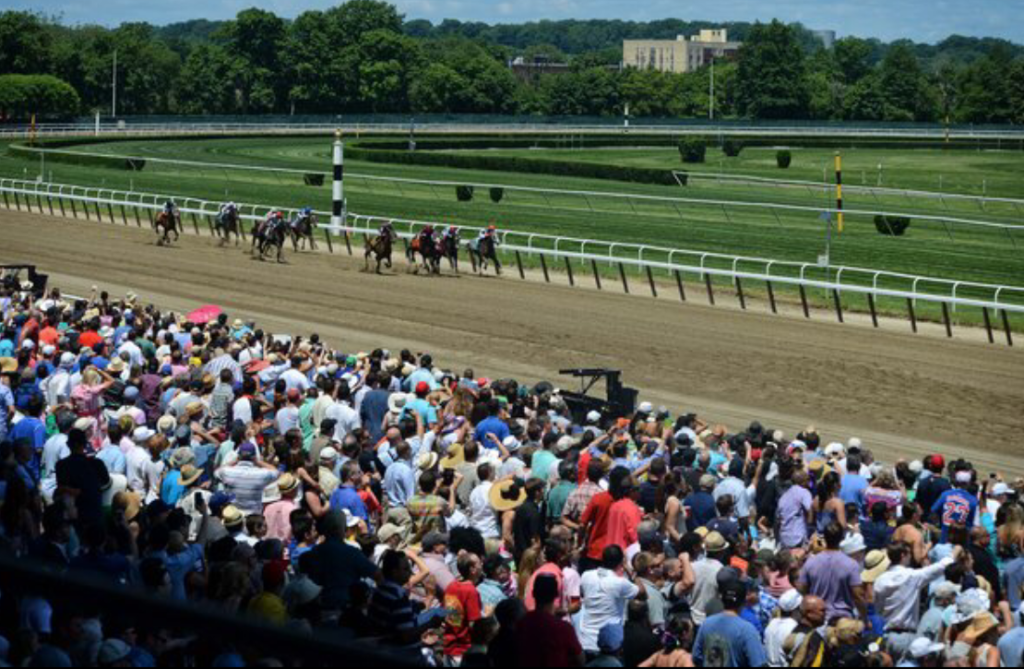
By: William G. Gotimer, Jr.
Horse racing is one of the oldest sports in the North America. It has been a wonderful mix of sporting endeavor and vice since our country began. The settlers of the original thirteen colonies left much of English tradition behind, but the racing of thoroughbreds was an English pastime that survived into the New World. It even moved westward as the country did.
Much of the allure of the Kentucky Derby is owed to the lawless image that the New York Times put forth of Kentucky on its front page. It was a place where wild men lived wild lives but then became civilized enough each year to conduct a world class horse race, and where women dressed in their finest to see which three year old would prove best in the spring. Easterners who dared bring their horse and treasure west could expect a wild yet civilized time on the frontier, and come home with stories of mingling with the unpredictable people of Kentucky. Spend enough money and the Easterner could come back with a sort of nobility – he could be named a Kentucky Colonel. As different as the experience was, there was comfort in the actual racing of horses which is very similar no matter where you roam. It is that comfort that still exists today.
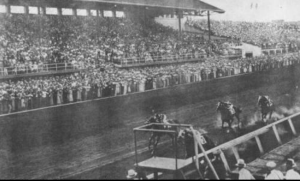
Look at a racing program from the turn of the twentieth century and compare it to one at the turn of the twenty-first century and they are almost identical. The vernacular of the sport has remained pretty much the same. The distances, conditions and equipment are not very different. The concepts and strategy are almost identical to what they were 100 years ago. Of course there has been some modernization in betting methodology (computers, machines etc.) and in betting offerings (pick 4, 5 and 6’s) but for the most part it has remained the same. The sayings that were true more than a century ago are all still true – “horses for courses”, “pace makes the race”, “missed the wedding don’t make the funeral”; “weight will stop a freight train” – and all still apply.
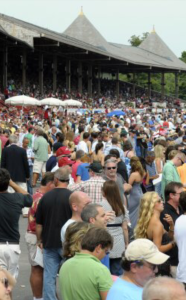 Where racing missed the proverbial boat and saw its popularity wane, was when it shunned television and missed out on a few generations of fans who obtained most of their knowledge from the new medium. Few people remember that one of the first televised sporting events was a horse race but a combination of concerns made racing shun television.
Where racing missed the proverbial boat and saw its popularity wane, was when it shunned television and missed out on a few generations of fans who obtained most of their knowledge from the new medium. Few people remember that one of the first televised sporting events was a horse race but a combination of concerns made racing shun television.
The racetrack operators were always wary of the possibility that people would steal their “product” by accepting bets on their races illegally. In their eyes the takeout was their profit and a wide dissemination of the racing image would make it all too easy for people to shun the relatively new pari-mutuel betting for the old tried and true bookmakers. They were correct as the takeout was what fueled the game. Racing viewed television much as the ancient Chinese viewed flight – it made their wall obsolete. Therefore racing took great pains to keep its product hidden. This included employing tape delay when racing was shown and banning telephones and recording devices at racetracks. As a gambling monopoly in most places they assumed the lure of vice was strong enough that it need not reach out to find participants.
This led to the second reason racing missed out on the television boom. Gambling on thoroughbreds was viewed as a tawdry vice – just look at the recent action by the Governor of Indiana to see that the sentiment still exists in certain places. Many states – most notably Texas – had no legalized horse racing and a number of Midwest states permitted only harness horses (since a good carriage race home from Church on Sunday was seen as less offensive). Racing, if it did exist in those places, needed to cloak itself in the all-American goodness of a state fair or at the very least a limited meet of a few days. This suited racetrack operators just fine as they generally ignored those states and focused on the moneyed states where horse racing was tolerated – tolerated being the key word. Even in states where racing was legal it was always on the brink of being outlawed or regulated further. Politicians could usually be counted on to pander to the sense that life was becoming sinful and gambling was an easy target. The racetrack owners figured they didn’t need the headache and liked operating under the radar. The horseplayers managed to find their way to the racetracks and the rest of society left them alone. Advertising was considered risky lest it be viewed as the racetracks trying to glamorize their vice and television had way too high a profile. On the other side the television networks were also heavily regulated monopolies, and wary of politicians. Any viewing of an early television show will reveal how risk adverse television networks were. Apple pie and patriotism were acceptable – marital beds and horse-racing were not.
And so the die was cast. If you wanted to learn the joys of the game you had to physically attend. If you wanted to learn the lingo you needed a personal mentor. Some of us were lucky enough to manage to do that but most were not. Meanwhile other sports found a home on television and the nuances and vernacular of those games were spread far and wide. The National Football League somehow became almost religious as coaches spoke in biblical terms about football games, and the nation that shunned gambling on horses embraced a violent game and managed to bet on it consistently on the weekends, via point spreads and teasers. The percentage of diehard football fans who never attended a live game is astounding. People who never set foot in a stadium walk around in all sorts of apparel from their local team. Advertisers could not get enough. Football became America’s game and through the sheer power of television the Dallas Cowboys became America’s team led by Tom Landry, an outspoken proponent of the “horse racing is evil” crowd.
Basketball in the form of the NBA and the NCAA also road the television gravy train to wild increases in popularity in the country and in the NBA’s case – worldwide. Gambling had a hand in that as well as the March Madness office pool has gone as far as the White House. With limited amounts of time during the games for commercial interruption pre and post and halftime shows developed where the vernacular of the sport was spoken in hallowed tones. Whole generations grew up familiar with the terms “zone defense”, “two-minute offense”, “slam-dunk” while being totally ignorant of the terms furlong, place or show.
To add insult to injury the television medium had a built-in incentive to excuse any bad behavior of baseball, football or basketball. There have been plenty of scandals but all was forgiven by television as soon as the next All-Star Game, Super Bowl or March Madness arrived. That left horse racing and to a lesser extent hockey to be the bad boys and racing did not disappoint. The graphic breakdowns of horses on big race days horrified a new audience who had neither the inclination nor the opportunity to observe how well the vast majority of horses are treated. It was viewed as medieval and blood thirsty and greedy. The networks reacted by focusing on the humans who owned the horses but in many cases they came across as pampered, or unworthy, and sometimes both. What racing was missing and what some of us saw and loved but could not communicate was the everyday beauty of the drive to become race ready; the synchronization of man and beast, the redemptive ability to lose as a favorite and then come back and win as a longshot. None of this could be conveyed by viewing only a few times a year. Generations of fans were lost.
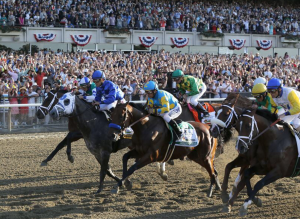 Trip Handicapping- A Second Chance
Trip Handicapping- A Second Chance
Much like a thoroughbred which has a rough trip, the sport itself has found trouble by ignoring the power of television. Luckily, circumstances have provided another opportunity. The major sports leagues lead by their network partners have largely shunned the daytime market in favor of later starts times to accommodate the West Coast and Las Vegas. Meanwhile the explosion in cable channels has caused a need for content. Horse racing provides plenty of content, and live content at that. Live programming has become the only thing that is commercially appealing to advertisers since the tech-savvy younger desirable demographic has learned how to avoid commercial interruption through a number of means. Rare is the 20-40 year old who watches a one-hour television program with full commercials. An increasing number of non-betting sports fans even tune into a live sporting event on a tape delay so as to move quickly through the incessant advertisements, time-outs a video reviews. One sports journalist has observed that he can now watch almost every major league baseball play in the division he follows each night through the use of replay and the fast forward button.
This provides racing with a vast opportunity to become the predominant televised event during the day, particularly weekdays. An effort to promote TVG or the local racing channel in areas that have one as the channel to be shown in public or quasi-public places like airports, malls, gas stations, doctor’s offices and the like would be well worth it. Trends pick up quickly, and with a promotional effort racing could find itself in front of millions of eyes that otherwise would not find it. Exposure is more than half the battle as we have seen with the astounding popularity of reality television and various contestant based shows such as American Idol, Survivor and the like.
New Technology: Everything old is new again
It has been said that the more things change the more they stay the same, and this can be said of horse racing and its exposure. An old medium – radio – has been revived in new forms. Satellite radio and more so, internet radio, has made way for content that is more specialized than terrestrial radio could commercially provide. There is now a plethora of racing information provided on the internet, on radio, on youtube etc. In a shameless plug for my weekly internet radio show – Racetrackers – I will state we have been able to interview the top names in the industry each week and have them speak directly to a select audience about sophisticated concepts and ideas surrounding racing. This is far more informative and interesting than the time-limited sound bite that the more generalized media outlets can afford to give to racing and it spawns both interest in and education about the sport and its participants.
Similarly, Twitter and Facebook have rejuvenated the older custom of “fan clubs”. Once an antiquated concept – fan clubs have made a tremendous comeback not only for the stars such as American Pharoah, California Chrome and Beholder but also for less accomplished horses such as Juba and other hard knockers like The Big Beast or up and comers such as Cupid and Unified. Each member of the fan club gains a vested interest in the horse and its accomplishments and welfare. It also permits the fans to follow the training regimen and race selection in real time. Sustained interest of course is the key to any sport and spurs debate and conversation. While old line trainers may bristle at the idea of fans second guessing or critiquing their strategy and/or decisions, it is worth noting it is just such scrutiny that has made multi-millionaires of college football and basketball coaches, and fueled fevered interest in team sports for centuries. It has also made such secretarial functions such as the college draft glitzy must-watch events for football and basketball fans. It is a simple formula – the more connected fans feel to every aspect of the sport the more interest that is generated.
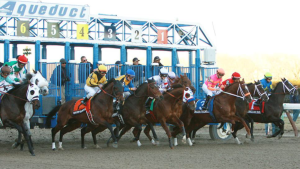
Finally, the easy access to live racing action on the internet and smartphones means fans can follow all the racing both domestically and internationally. Watching racing from Dubai or Australia or virtually anywhere else is no longer a novelty (Not surprisingly France is the exception which denies its signal internationally). It is now simply a matter of time change. Watching Dubai in the morning on the East Coast and checking Australia before turning into bed is now possible and for some of us routine. It is now a small world.
Outlook
What does all this portend and how should it be marketed? It is abundantly clear that being a horse racing fan and/or a horse bettor is actually a chosen lifestyle that is not incompatible with other obligations such as family and work. The new technology and available information has changed horse playing, and watching from something one needed to make time for to something one can easily do every day.
This continuity makes all of us part of a greater community and enhances the overall experience. Most notably, it becomes a part of our identity. As the name of our show – Racetrackers – asserts we are all connected by our love of racetracks and racing. We feel confident that when we meet another horse racing fan we will have similar outlooks on many things and appreciate the mix of hard work and luck that is the hallmark of the sport. We will also know that we are not as good as we think we are when we win and not as bad as we think we are when we lose which it should be added, is a life lesson that many non-horse players would benefit by learning.
Importantly, there is no longer a stigma attached to betting horses or following the game on a daily basis. Since you can do so now without being derelict in your other obligations and duties, it is no longer indicia of a dissolute life.
This is an eclectic club that is easy to join and provides lasting benefits in the form of interest, ever-changing conditions and emotional ups and downs. It should be marketed as such. Come join us as a racing fan –every day – you won’t regret it. You will never be bored and never get stale for there is always another day and another card. You can participate at any level you wish or as your budget permits, and your opinion counts in each and every race and situation. Come join us, jump in the water is warm. All this club requires is your attention.



